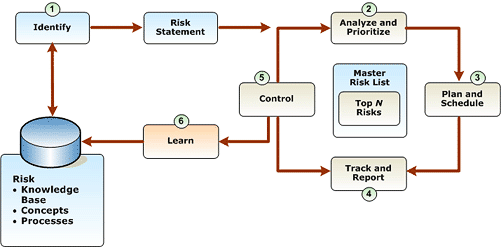The goal of an organization should be to make Risk Management a routine
part of planning and executing business missions
Risk Management as a Business Mission
Despite heavy investments in tools and personnel
- Why is it that organizations continue to be breached using basic and well documented techniques?
- Why do organizations appear to find it viable to spend large sums to settle breaches rather than address Risk proactively?
Why take risks which could result in
- Loss of credibility
- Loss of market share
- Lawsuits and settlements
- Strict Auditing And Compliance Enforcement
Aimdeep will help identify and address the risks in your organization
Our Approach to Risk Management Process
There are six steps to the risk management process: identify, analyze and prioritize, plan and schedule, track and report, control, and learn. It is important to understand that the process of managing each risk goes through all of these steps at least once and often cycle through numerous times.Also, each risk has its own timeline, so multiple risks might be in each step at any point in time.
Risk Management Process Steps
Identify
Risk identification allows for identification of risks so that the stakeholders become aware of potential problems and make appropriate decisions. Risk identification should be undertaken as early as possible and should be repeated frequently.
Analyze and prioritize
Risk analysis transforms and quantifies the estimates or data about specific risks that developed during risk identification into a consistent form that can be used to make decisions around prioritization. Risk prioritization enables operations to commit resources to manage the most important risks.
Plan and schedule
Risk planning takes the information obtained from risk analysis and uses it to formulate strategies, plans, change requests, and actions. Risk scheduling ensures that these plans are approved and then incorporated into the standard day-to-day processes and infrastructure.
Track and report
Risk tracking is a major part of any project. It is used to monitor the status of specific risks and the progress in their respective action plans. Risk tracking also includes monitoring the probability, impact, exposure, etc for changes that could alter priority or risk plans and ultimately the availability of the service. Risk reporting ensures that all the stakeholders are aware of the status of top risks and the plans to manage them
Control
Risk control is the process of executing risk action plans and their associated status reporting. Risk control also includes initiating change control requests when changes in risk status or risk plans could affect the availability of the service or service level agreement (SLA).
Learn
Risk learning documents the lessons learned and use tools to capture, categorize, and index that knowledge in a reusable form that can be shared with others.


 ,
,